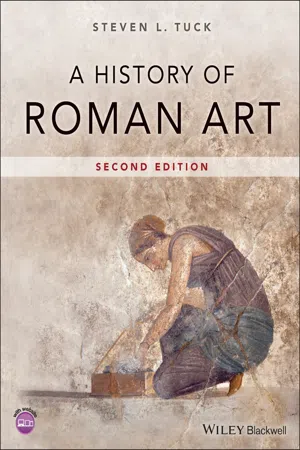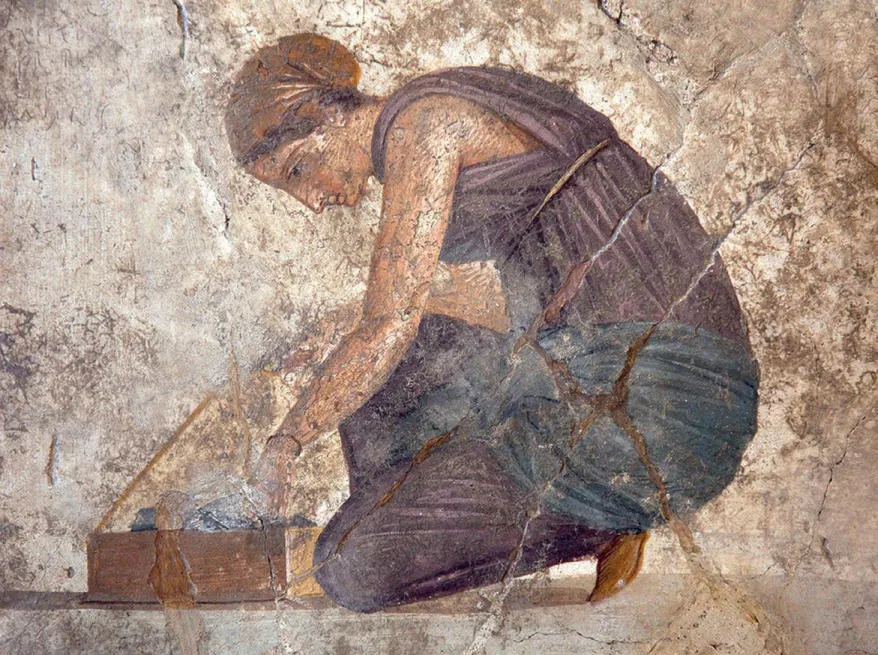
- English
- ePUB (mobile friendly)
- Available on iOS & Android
A History of Roman Art
About this book
The new edition of the leading textbook on Roman art, updated with new images and expanded geographic and cultural scope
A History of Roman Art is an expansive survey of the painting, mosaic, sculpture, decorative arts, and architecture of ancient Rome. This acclaimed textbook provides a fully-illustrated narrative history of Roman art that spans a millennium, from the early origins of Rome to the era of Emperor Constantine. Interwoven throughout the text are themes of Rome's cultural inclusiveness and the importance of art in promoting Roman values, helping students understand how diverse cultures contributed to Roman life. Accessible, chronologically-organized chapters provide numerous examples of the arts, their cultural and historical context, descriptions of artistic techniques, and writings by ancient authors—enabling students to develop a rich appreciation of art's importance in the Roman world.
Now in its second edition, this market-leading textbook features thoroughly revised content throughout. Additional images and excerpts from literary sources are complemented by new historical discussions of metalwork, carved gems, glass, and sarcophagi. This edition features more maps and illustrations, in-depth analysis of iconography, greater emphasis on the types of objects used to decorate the lives of ordinary Romans, expanded coverage of freedmen and women as artists, subjects, and patrons, and much more. A number of works that represent popular art have been added. That is, art in the everyday Roman world, rather than just the large scale works of sculpture and architecture of elite patrons. It also reveals patterns of artistic workshops, trade, and social and economic networks. Additionally, this edition takes into account new approaches in scholarship. This comprehensive textbook:
- Provides a thorough introduction to Roman art history featuring more than 400 high quality images and illustrations
- Includes a full set of pedagogical tools, such as historical timelines, key term definitions, and updated references and further reading suggestions
- Offers "Scholarly Perspective," "A View from the Provinces," "More on Myth," and "Art and Literature" textboxes in each chapter
- Includes a companion website containing PowerPoint slides and additional instructor resources
A History of Roman Art, Second Edition is an ideal primary or secondary text for courses on Roman art and archaeology, Roman art and architecture, Greek and Roman art, and general Roman civilization, history, and culture.
Frequently asked questions
- Essential is ideal for learners and professionals who enjoy exploring a wide range of subjects. Access the Essential Library with 800,000+ trusted titles and best-sellers across business, personal growth, and the humanities. Includes unlimited reading time and Standard Read Aloud voice.
- Complete: Perfect for advanced learners and researchers needing full, unrestricted access. Unlock 1.4M+ books across hundreds of subjects, including academic and specialized titles. The Complete Plan also includes advanced features like Premium Read Aloud and Research Assistant.
Please note we cannot support devices running on iOS 13 and Android 7 or earlier. Learn more about using the app.
Information
1
INTRODUCTION TOROMAN ART HISTORY

CULTURAL PROPERTY CONTROVERSIES

DATING DILEMMAS IN ROMAN ART HISTORY
Table of contents
- COVER
- TABLE OF CONTENTS
- TITLE PAGE
- COPYRIGHT PAGE
- DEDICATION PAGE
- ILLUSTRATIONS
- PREFACE TO THE SECOND EDITION
- PREFACE TO THE FIRST EDITION
- NOTE TO STUDENTS
- ACKNOWLEDGMENTS
- WALK THROUGH TOUR
- TIMELINE
- ABOUT THE WEBSITE
- 1 INTRODUCTION TOROMAN ART HISTORY
- 2 REGAL PERIOD, 753–509 BCE
- 3 THE EARLY REPUBLIC, 509–211 BCE
- 4 THE LATER REPUBLIC, 211–31 BCE
- 5 THE AGE OF AUGUSTUS, 31 bce–14 ce
- 6 THE JULIO‐CLAUDIANS, 14–68 CE
- 7 THE FLAVIANS, 69–96 CE
- 8 TRAJAN AND HADRIAN, 98–138 CE
- 9 ANTONINE EMPERORS, 138–192 CE
- 10 CIVIL WAR AND SEVERAN DYNASTY, 193–235 CE
- 11 THE THIRD CENTURY AND THE TETRARCHY, 235–306 CE
- 12 CONSTANTINE, 306–337 CE
- GLOSSARY
- GUIDE TO FURTHER READING
- INDEX
- END USER LICENSE AGREEMENT